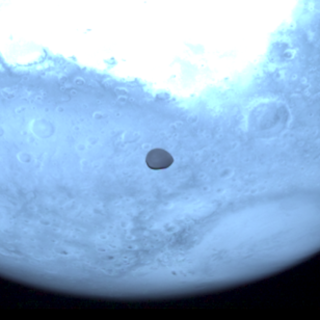It may interest you
-
 The headquarters of the Instituto de Astrofísica de Canarias (IAC) and its technological headquarters, IACTEC, open their doors to the public at their Open Days as part of Open Government Week 2025. This initiative, promoted by the Open Government Partnership worldwide, seeks to bring public administrations closer to citizens and promote the values of transparency, integrity, participation and accountability. The event at the IAC headquarters will take place on Monday 19 May, while the IACTEC will open its doors on Tuesday 20 May. Both days will be held in person, with two visiting hoursAdvertised on
The headquarters of the Instituto de Astrofísica de Canarias (IAC) and its technological headquarters, IACTEC, open their doors to the public at their Open Days as part of Open Government Week 2025. This initiative, promoted by the Open Government Partnership worldwide, seeks to bring public administrations closer to citizens and promote the values of transparency, integrity, participation and accountability. The event at the IAC headquarters will take place on Monday 19 May, while the IACTEC will open its doors on Tuesday 20 May. Both days will be held in person, with two visiting hoursAdvertised on -
 An international review article in which IAC researcher Jesús Falcón Barroso is a contributor, explains how the study of stellar populations in galaxies outside the Milky Way and the Local Group, using techniques which are called “extragalactic archaeology”, permits the reconstruction of the processes of formation and evolution of those galaxies. This article has been published in the Annual Review of Astronomy & Astrophysics , one of the most prestigious journals in this field, to which only five researchers of the IAC have contributed during the lifetime of the Institute. How did theAdvertised on
An international review article in which IAC researcher Jesús Falcón Barroso is a contributor, explains how the study of stellar populations in galaxies outside the Milky Way and the Local Group, using techniques which are called “extragalactic archaeology”, permits the reconstruction of the processes of formation and evolution of those galaxies. This article has been published in the Annual Review of Astronomy & Astrophysics , one of the most prestigious journals in this field, to which only five researchers of the IAC have contributed during the lifetime of the Institute. How did theAdvertised on -
 ESA’s Hera mission for planetary defense performed a flyby of Mars, as part of its gravitational assistance manoeuvre to shorten its journey to the binary asteroid system Didymos. During the flyby, the spacecraft came around 5000 km from the surface of Mars, having also the opportunity to obtain images of its two moons, Deimos (during the approach) and Phobos (when departing Mars). Julia de León, Javier Licandro, and George Prodan, researchers at the Instituto de Astrofísica de Canarias, participate in this mission, successfully launched from Cape Cañaveral, Florida (USA) on October 7, 2024Advertised on
ESA’s Hera mission for planetary defense performed a flyby of Mars, as part of its gravitational assistance manoeuvre to shorten its journey to the binary asteroid system Didymos. During the flyby, the spacecraft came around 5000 km from the surface of Mars, having also the opportunity to obtain images of its two moons, Deimos (during the approach) and Phobos (when departing Mars). Julia de León, Javier Licandro, and George Prodan, researchers at the Instituto de Astrofísica de Canarias, participate in this mission, successfully launched from Cape Cañaveral, Florida (USA) on October 7, 2024Advertised on